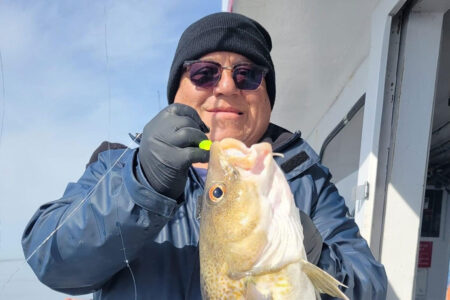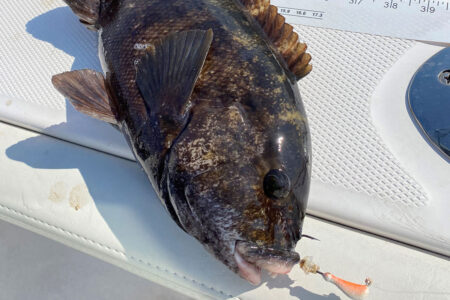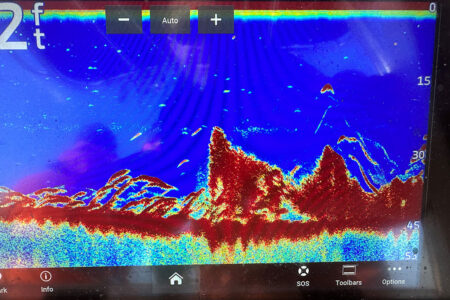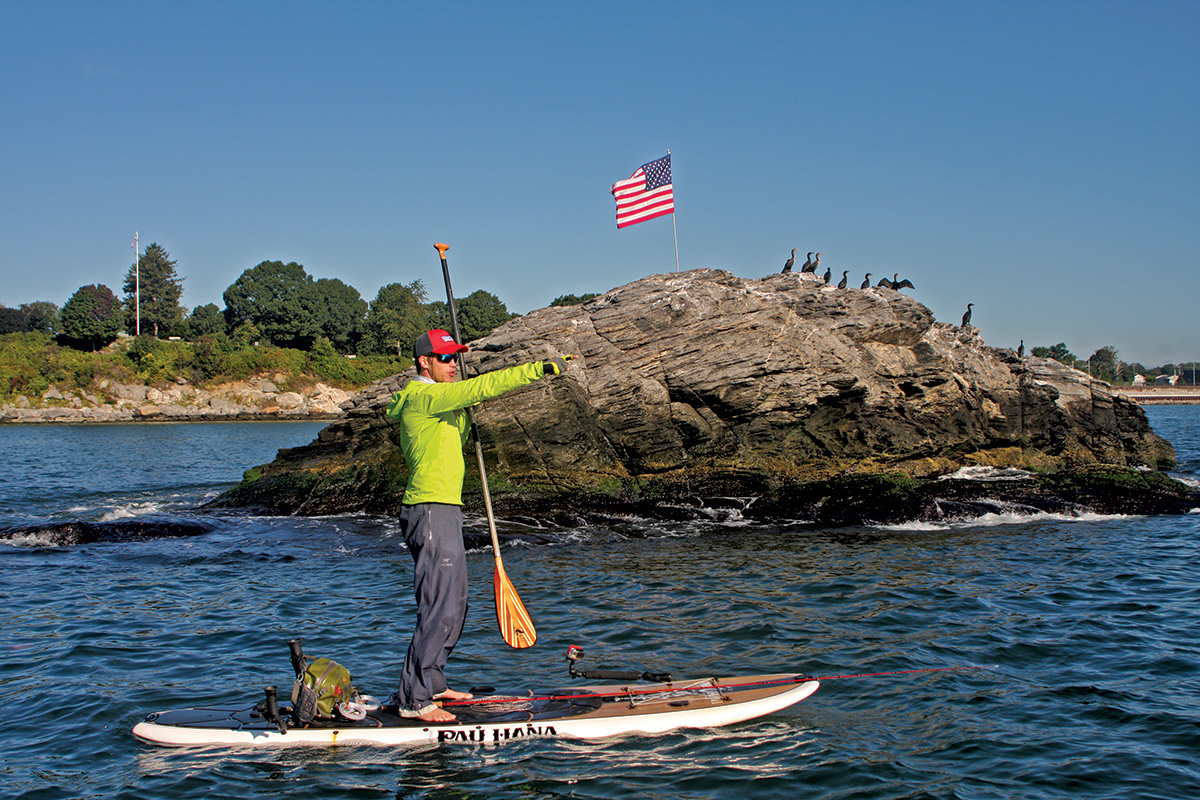
It’s the ultimate sporting challenge for bluefish, stripers and albies.
Fishing from a stand-up paddle board or “SUP” provides a challenge and adventure unmatched by any other casting platform. Its benefits are many and drawbacks are few according to professional paddler Sean Callinan (scallinan1@gmail.com), a licensed guide who specializes in offering fishing trips aboard SUPs.
A fishing paddle board is longer and wider than other models, which increases stability and provides more room for gear. To prevent unhappy tumbles into the brine, SUP fishing necessitates reasonable balance. If you’ve never been paddle-boarding before, practice in a bathing suit on calm water during warm weather. Once you’ve achieved a degree of expertise, don some fishing apparel, including your PFD, and with a rod in hand, intentionally drop into the water to practice reacquiring and standing back up on your board—without losing your tackle.
Benefits of Paddle Boards
SUP fishing offers many benefits not available to the nearshore angler. You can access almost any coastal shoreline, especially in shallow or rocky spots where you wouldn’t dare venture with your powerboat. You don’t need a ramp because you can launch a paddle-craft anywhere you can reach the water on foot. This ability allows you to discover new spots not accessible by boat or shore fishing.
SUPs are quick and easy to transport with a proper roof rack or even inside a large SUV. “I use the Yakima SUP Dawg as my roof carrier,” said Callinan. “It’s wide enough for my 36-inch-wide board and has sufficient strapping capacity for two boards. Its Kevlar locking straps prevent theft and are durable enough for highway trips.”
A SUP is much less expensive to purchase and maintain than a boat, and there’s no trailering, registration, insurance, fuel or oil costs. Boards are also much better for the environment. “I’m not burning gas,” said Callinan, “only calories.”
Because you stand on a board, the height you gain compared to wading creates better visibility for sight-casting in shallow water. A moderately-accomplished paddler can be nearly silent when approaching stripers ghosting in skinny water, something difficult to do with a powerboat. Fighting even small fish from a SUP adds agility to the mix, making any size catch exciting and satisfying.
“Personal watercraft are quiet,” said Callinan, “and the only way to reach prime spots otherwise out of casting range for fly or spin fishermen, so they’re very appealing. And when you snag your expensive lure on a rock you can just paddle over to retrieve it. SUP fishing also provides a great full-body workout because you’re constantly firing your major muscle groups as you dig into the water and pull with the paddle.”
Inflatables and Hard Boards
New to the market are versatile inflatable SUPs like those made by Sea Eagle (www.seaeagle.com) which offer a fishing model called the FishSUP featuring a squared stern, thereby allowing for the greatest stability among SUP designs. You can have it ready in less than 10 minutes, and thanks to its flat stern, you can outfit it with an electric trolling motor. In deflated mode, unlike hard boards, you can store the Sea Eagle in your trunk so it’s always available. “If you’re a traveling angler like me,” said Callinan, “an inflatable also allows you to check your board on a plane.”
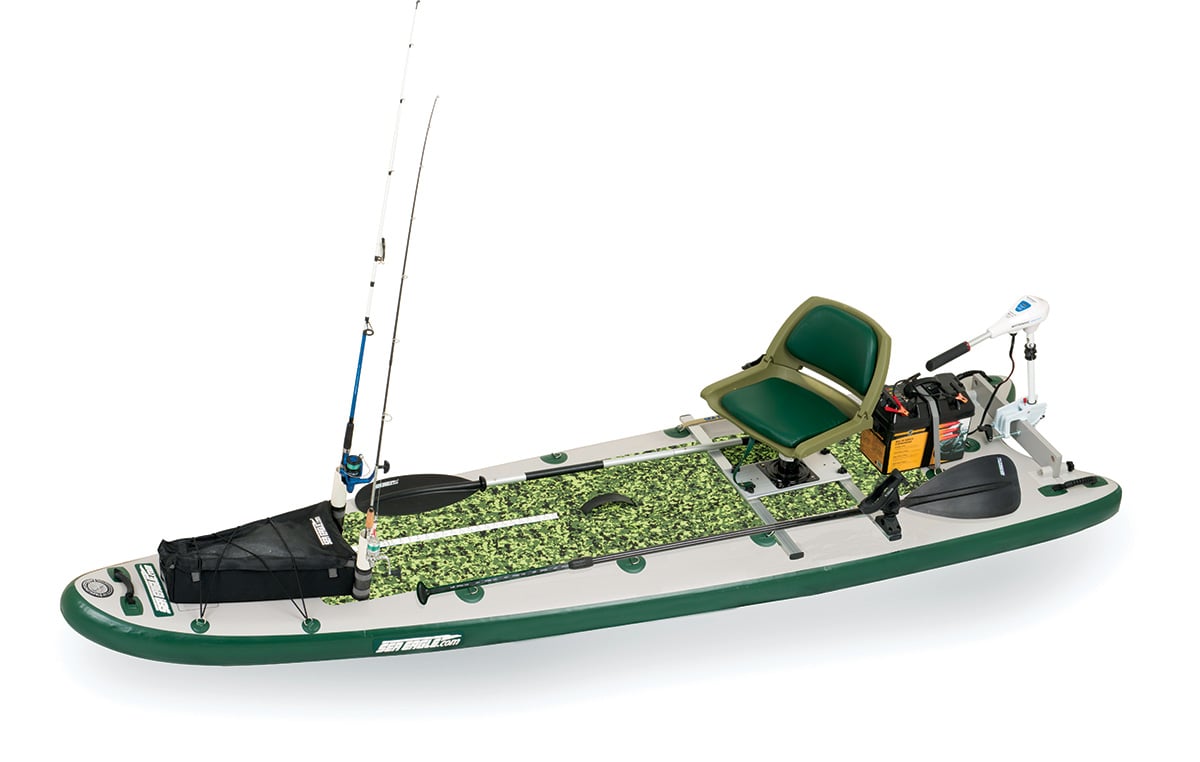
Hard boards have advantages, too. “My hard board of choice is the Pau Hana Endurance,” said Callinan. “Its touring-style displacement hull is perfect for cutting through wind and waves or idling in a current. It can handle up to 100 pounds in gear for extended trips. The hull is impact resistant, so it’s extremely durable for fishing breachways, reefs, transporting in a mothership or launching on gravel or rocks. Its mounts provide attachment options for rodholders, deck bags, fishfinders, cooler, fishbox, camera, paddle clips, cup holder, speakers and compass.
“I also added a chartplotter/depthfinder. It’s easily installed on a ram mount, attached to a waterproof battery and waterproofed wiring, which is stowed in a Pelican case or cooler. The transducer is on a suction cup easily reached and removed when beaching the SUP.”
How to Fish the Shallows
Almost all fishing from a SUP is done by casting with a spinning or fly rod, and basic techniques don’t vary much from fishing off a small powerboat. When conditions are right, the most challenging and exciting way to access bluefish, stripers and even false albacore is to stalk them near boulder fields.
Captain Ned Kittredge advised plying shallows of 2 to 20 feet over a structured shoreline with moving water. “I’ve found bass in as little as 18 inches of water,” he said. “But it’s not necessarily fast water, which would add to your paddling workload. The current I’d look for is more subtle.”
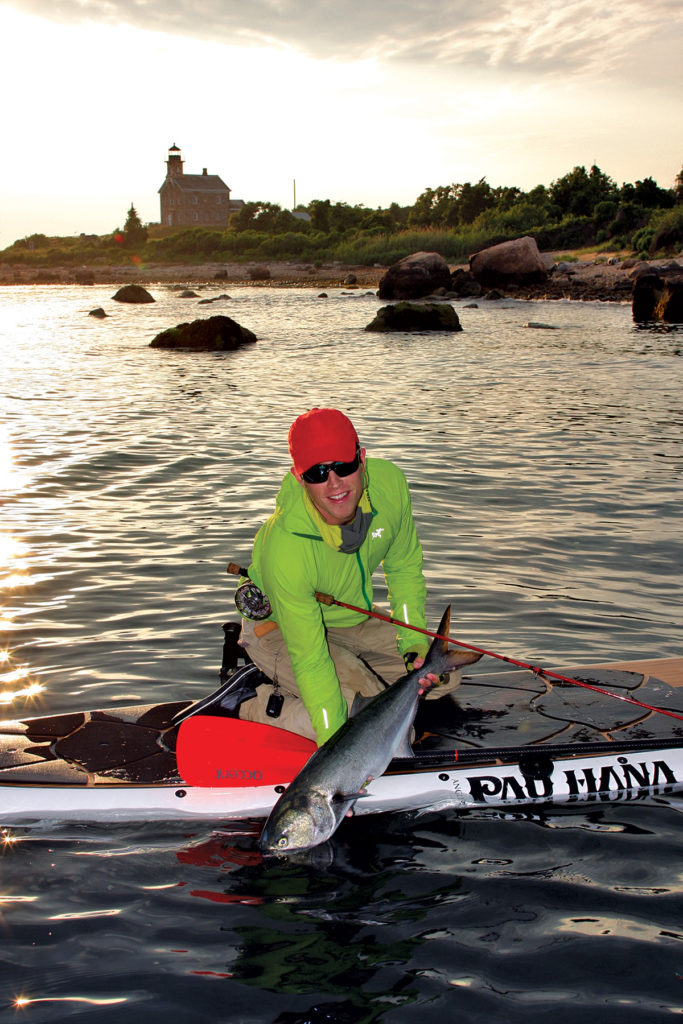
Captain Dixon Merkt, a light spinning and fly specialist, said that you need to learn how to read the water for the best chance of success. “Look for nervous water created by the current moving over submerged structure. I advise paddling up current to get above it, and then working your way down through it, keeping your board at the edge of casting range. Never hesitate to cast beyond that nervous water and retrieve the plug back over it so it looks like an escaping baitfish traveling over a distance.”
Any retrieve and almost any lure works for blues and bass when they’re aggressive and hungry. But when they’re fussy you need to vary your technique until you find one that produces. For bluefish, a steady, fast and noisy retrieve is effective. But for stripers, most pros slowly work a spook or pencil popper “walk-the-dog” style. Occasionally changing speed or pausing often prompts a strike from a stubborn linesider, especially effective during low-light conditions. Albies, however, demand experimentation with both retrieves and lures or flies, trying to find the magic formula to draw a strike from a blitz on a given day.
Sight-casting over flats requires a stealthier approach than casting to boulder fields. As a bass or blue ghosts along the bottom, cast your lure or fly directly in front of it, if possible. But to do that successfully you must account for the fish’s speed and direction to lead it like a quarterback leads a receiver. Never just plop a lure in the middle of a school. In shallows, that spooks and scatters them. Instead, keep your board as far away as possible, cast to the perimeter of a pod and retrieve your lure or fly across or away from the fish like an escaping baitfish. Never pull the lure towards a predator because that looks unrealistic.
“One other quality of SUP fishing,” said Callinan, “is that you can draw yourself to a big fish. And I’ve learned that by anticipating a hooked fish spotting the board, I’m ready to loosen my drag to let it run. I find this keeps me on my board rather than next to it.”
